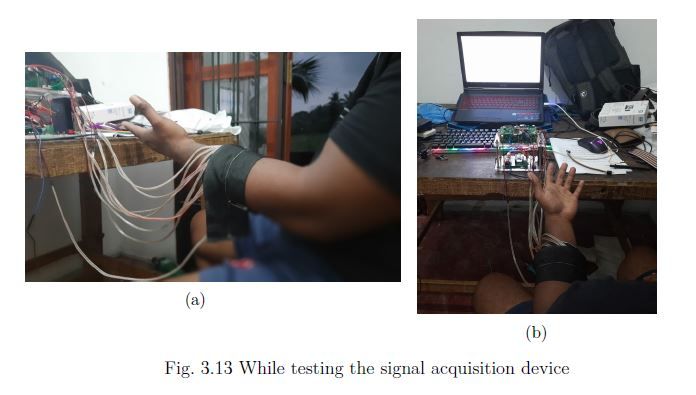
Supervisors
Authors

Suhail S.

Yasiru Bhagya T.P.





Identifying hand gestures using surface electromyography (sEMG) signals is vital in the development of next-generation human-machine interfaces (HMI). sEMG based HMIs provide users with a more natural and convenient way to communicate with computing systems. sEMG signals recorded from muscle tissues give information about the intended muscle movements triggered by the brain waves. Identifying these movements allows developing interfaces that can control computing devices. In this research, an attempt was made to improve a hand gesture recognition model that could be used as a human-machine interface using an online open dataset of sEMG signals. First sEMG signals were preprocessed using a bandpass filter and notch filter to remove noises in the signal. Then various time, frequency, and time-frequency domain features extracted and they were fed into machine learning algorithms such as random forest, support vector machines (SVM), K-nearest neighbors (K-NN), and recurrent neural networks. All the results were validated using 10-fold cross-validation. Maximum testing accuracy of 90.03% was obtained using an SVM classifier with root mean square, mean frequency, and median frequency of the signal as features for 24 channel data. Later an attempt was also made to use this result to control a simple game developed in Unity using sEMG signals collected from an 8-channel signal acquisition device.
"